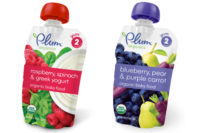GloCal Packaging
How to balance the desire for global scale and consistency, with the need for local relevance

The term “Think global, act local” was first coined in the context of environmental challenges, but has taken on a much wider meaning in recent years. The desire by multi-nationals and their marketing teams to drive a consistent proposition, packaging and design across markets and geographies is clear. It enables to quickly roll-out from one market to another, providing speed to market, manufacturing scale and marketing efficiencies. However, in-market experience has shown that whilst global design is effective, it can sometimes fall short in local market context where the retail environment is different and consumers might have different traditions, tastes and preferences.
This is why Global-Local (GloCal) packaging should be an essential component in any global marketing plan, requiring proper due diligence, to carefully understand the local market context and consumer needs.
There are three key actions companies, marketers and pack designers can follow in order to have a successful GloCal Packaging strategy.
Defining the “distinctive assets”
Any design and packaging project requires thinking upfront about what are the “core” and “flex” aspects of the brand and design.
The core aspects are the ones that need to stay consistent globally across markets. It is key to understand what your consumers already associate with your brand – it is what will help you protect it. Professor Byron Sharp from the Ehrenberg-Bass Institute calls this “distinctive assets”, and it could be specific colors, shapes, packaging, your brand name or even your country of origin. Toblerone is a great example of a brand that has distinctive assets that are core to the proposition and are consistent globally: it has a unique triangle chocolate and pack shape, and Switzerland is proudly labeled as the country of origin.
That being said, it is important to give regional freedom to use local knowledge to customize appropriately, and make final decisions on all aspects that were defined early on in the process as “flex.”
Developing a spectrum of pack formats for varying channels
Each market has a different retail reality, in some markets like India and Mexico traditional trade and kiosks will still be very dominant, while in others like the US & Europe modern trade is the lead channel. There are also emerging retail channels such as: e-commerce, small format modern trade and dollar stores. These channels will have very different requirements from brands, and consequently any GloCal Packaging project requires a deep understanding of the local retail environment and a retail-price-pack strategy to ensure that the product is available in the proper pack formats, sizes and price points to fit the local retail environment and local shopper behaviors. For example, in markets like India or Egypt Cadbury offers a variety of smaller sized affordable chocolate packs that are designed to fit more cluttered small traditional trade stores. These pack formats are not offered in markets like the UK & Australia that are modern trade driven and have different shopper behaviors.
Understanding local traditions and taboos
Marketers and designers need to cultivate a sound understanding of local customs and taboos to learn what is considered acceptable and what is not. This may involve modifying claims or a more visual based design to speak to local priorities or sensitivities. For example, in China the usage of gold is often used by global brands to communicate premiumness, but apparently in the Chinese culture a more pale yellowish gold shade actually has a negative cultural perception, so getting the right gold shade is critical in China.
In many emerging markets there is desire by consumers that packs will have a secondary usage, such as: to store coins, or for children to play with. On the other hand, in most developed markets retailers and consumers expect packages to become more and more environmentally friendly. Different consumer preferences that impact pack requirements should be evaluated early on in a GloCal pack project.
To summarize, it is important that marketers don’t try to solve the challenge of GloCal packaging design by focusing on the lowest-common denominator and ending up with global mediocrity. GloCal Packaging should be viewed as a balancing act, between global distinctive assets and local customization. It’s about making sure that global packaging works effectively on a large scale, as well as within each local market.
Looking for a reprint of this article?
From high-res PDFs to custom plaques, order your copy today!







